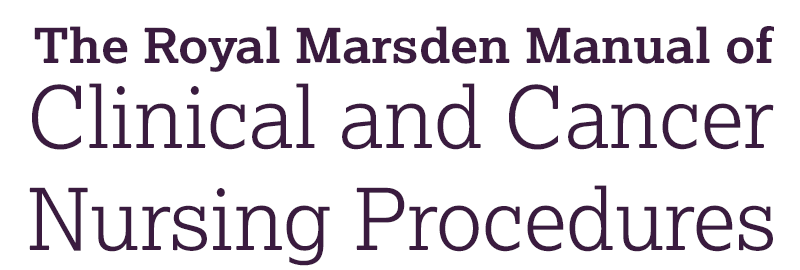Chapter 14: Observations
Skip chapter table of contents and go to main content
Post‐procedural considerations
Immediate care
Any abnormalities discovered during the respiratory assessment should prompt rapid action; early intervention is essential to improve patient outcomes (Sprigings and Chambers [189]). If there is a risk of a compromised airway or respiratory insufficiency or failure, then in‐house emergency or outreach teams (e.g. cardiac arrest team) should be sought, and senior nursing and medical teams should be made aware (Clarke and Beaumont [44]). Further information will be needed, including obtaining:
Other tests may also be required depending on the condition of the patient. These may include the following:
- arterial blood gases to check for carbon dioxide level, oxygen level, pH and acid/base balance (Adam et al. [2])
- sputum collection to assess for infection and/or specific diseases such as tuberculosis (Marini and Dries [112])
- chest X‐ray or CT (computed tomography) scan (Wilkinson et al. [215])
- blood tests, including a full blood count, urea and electrolytes, clotting screen and cross‐match (Marini and Dries [112])
- fluid balance to monitor for signs of fluid overload or dehydration (Tait et al. [194]).
Airway management and administration of oxygen
If a patient's condition necessitates the administration of oxygen, this should be provided as quickly and efficiently as possible. Although oxygen should be prescribed, in an emergency situation the absence of a prescription should not delay its administration (O'Driscoll et al. [147]). For further information see Chapter c12: Respiratory care, CPR and blood transfusion.
Ongoing care
As well as involving senior nurses, the medical team and potentially anaesthetists in the care of the patient, it may be useful to refer the patient to the physiotherapy team for further support and appropriate interventions, such as deep breathing exercises (Cleave [45]).
Documentation
Documentation should state the oxygen saturation result and whether the patient was breathing room air or supplementary oxygen; the flow of oxygen and method of administration should also be noted (O'Driscoll et al. [147]). If the oxygen is given in an emergency situation without a prescription, then subsequent documentation must state the rationale for the administration (O'Driscoll et al. [147]).
Education of the patient and relevant others
One of the key focuses of education for patients with respiratory conditions concerns smoking cessation. Ascertaining whether the patient smokes (both regular and e‐cigarettes), including how much and how often, and offering advice on how to stop, is an essential part of nursing health promotion. Discussions should focus on explaining the impact of smoking and how stopping may improve the patient's condition and prognosis; advice on how to stop should then be offered (Patel and Steinberg [153]).





